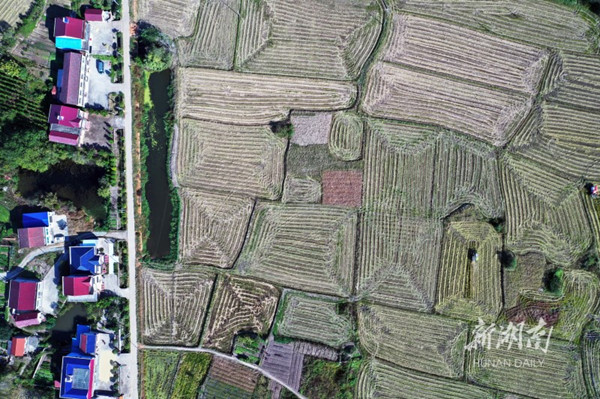Home>Tourism>Tour Hunan>Changde>Tourist Attractions
Jijiaocheng Ruins Site


The photos, taken on October 12, shows oil painting-like scenes of Jijiaocheng Village, Cennan Town, Lixian County, after autumn harvest. (Photo/Bai Yipu)
The Jijiaocheng Ruins Site is a registered key site under national-level protection. It is a Neolithic cultural heritage site, with high historical and cultural value.
Several large wooden constructions dating back to the Neolithic era were unearthed at the Jijiaocheng ruins site, according to a briefing on archaeological excavation held on October 9, 2021.
First discovered in 1978, the site used to be an ancient city from the Qujialing culture period (3300 BC-2600 BC) – a Neolithic civilization derived from the middle and upper reaches of the Yangtze River primarily found in today's Hunan and Hubei provinces.
Three excavations have been conducted at the southwestern part of the city wall since 2020. More than 30 housing sites were discovered at the 721-square-meter area, with a number of wooden architectural relics unearthed that date as far back as 4,800 years, according to archaeologists.
Remains of rice husks were also found at the site, covering an area of 80 square meters, inferring the rice cultivation of the ancestors.
Archaeologists believe the new findings would enrich the architectural history of prehistoric China.
Location: Fuxing Village, Cennan Township, Lixian County, Changde City
Source: China Global Television Network, Xinhua

